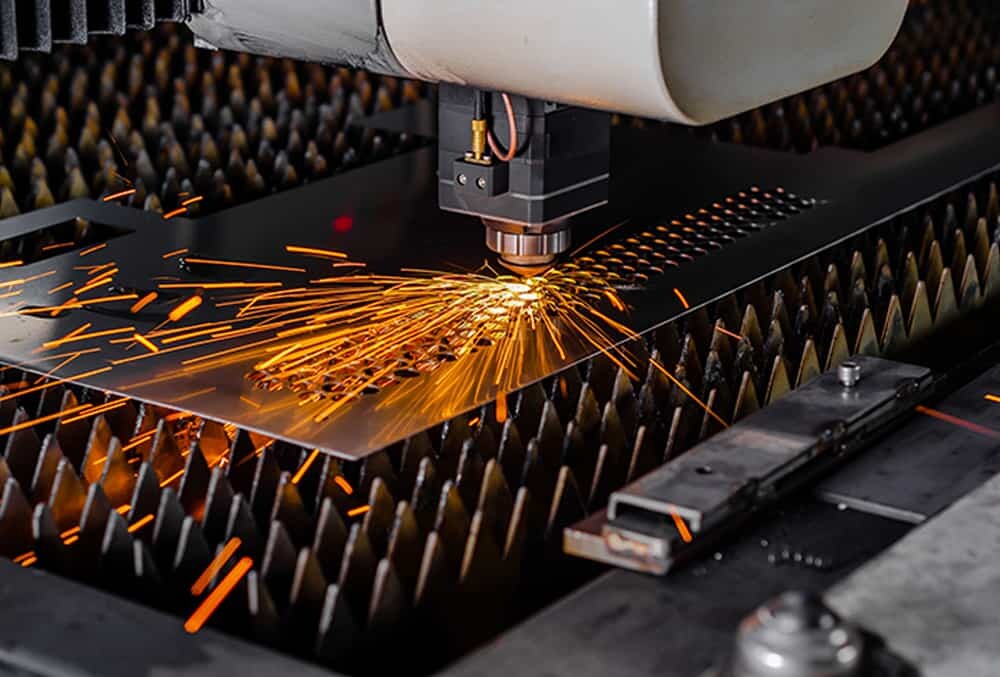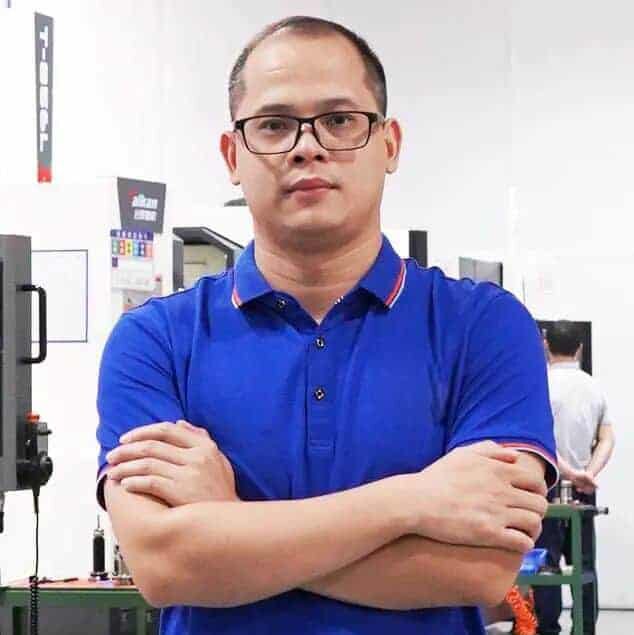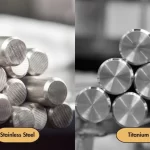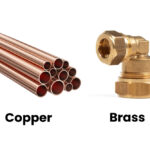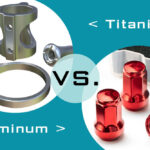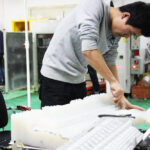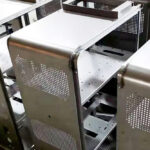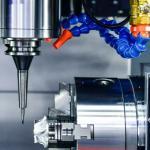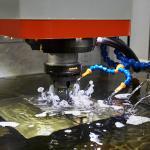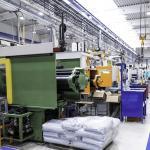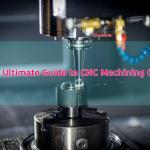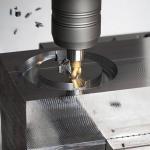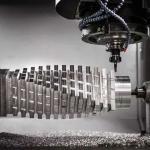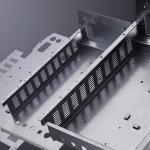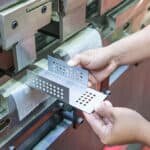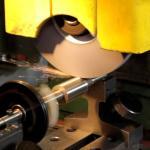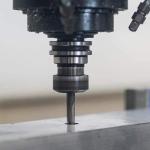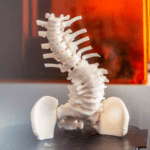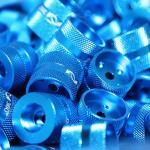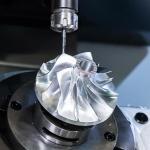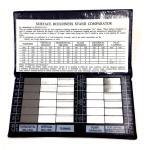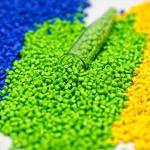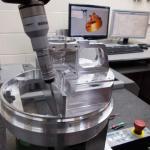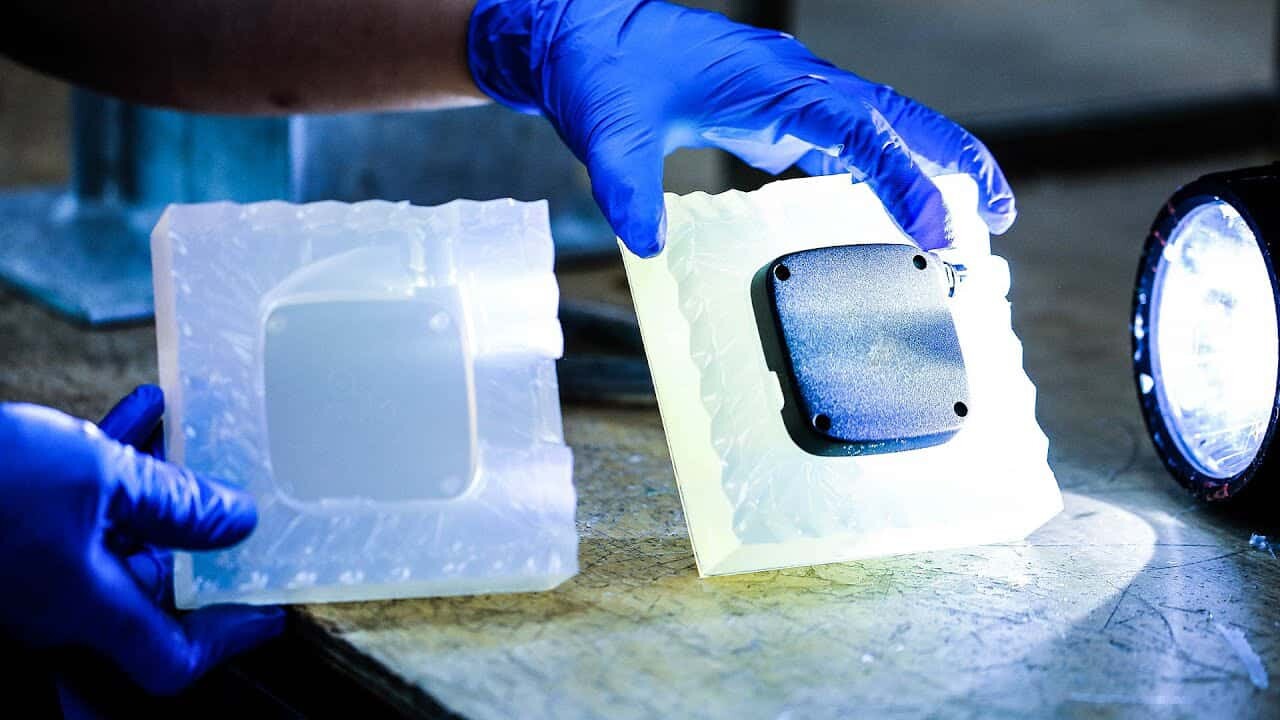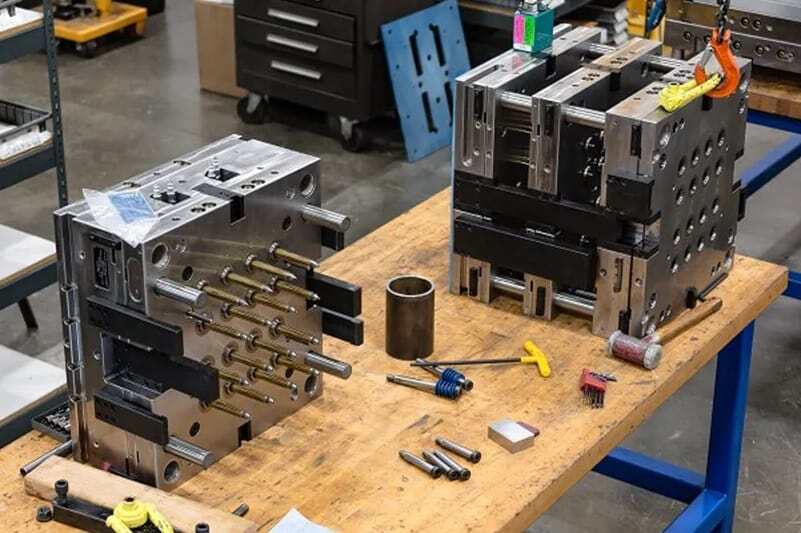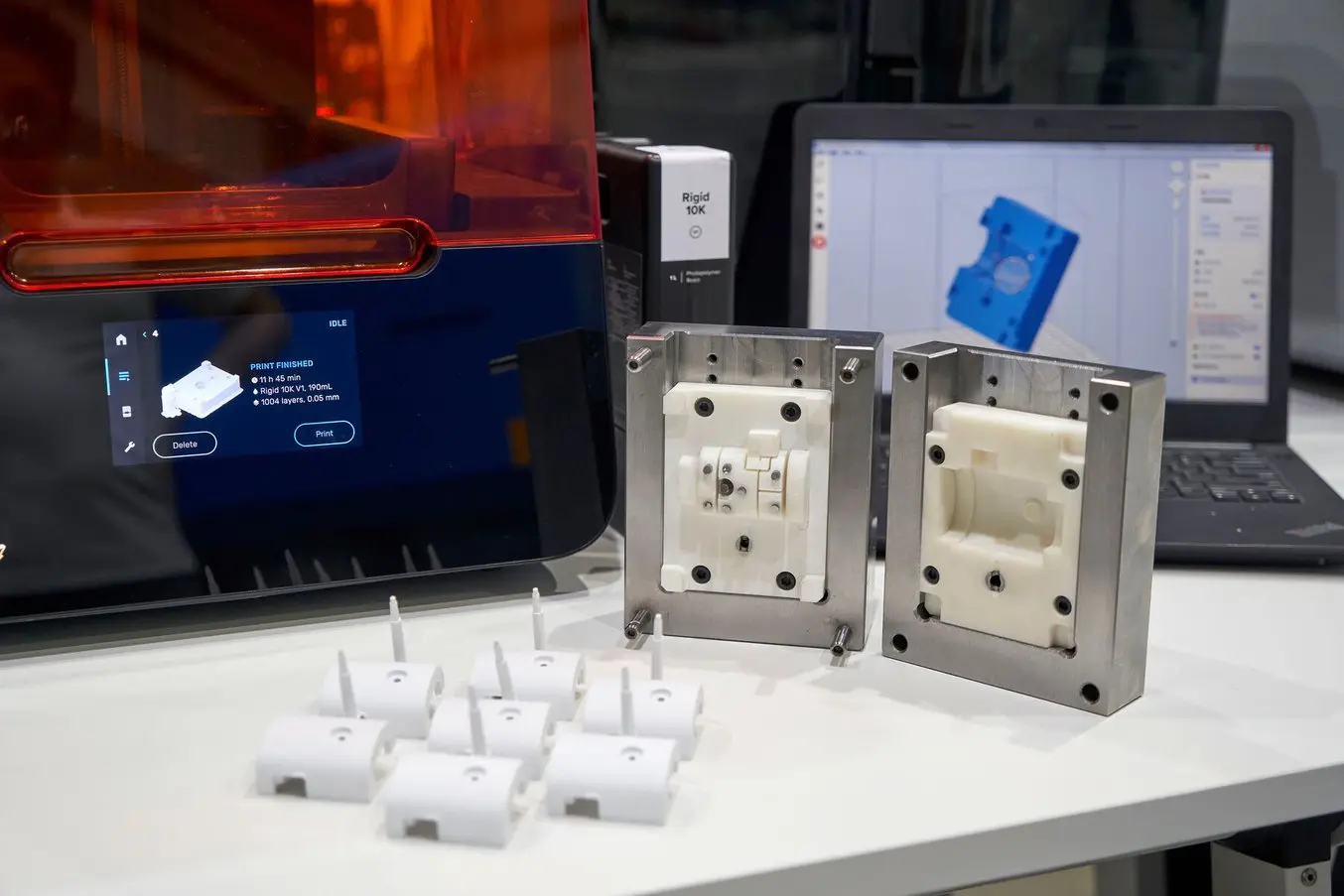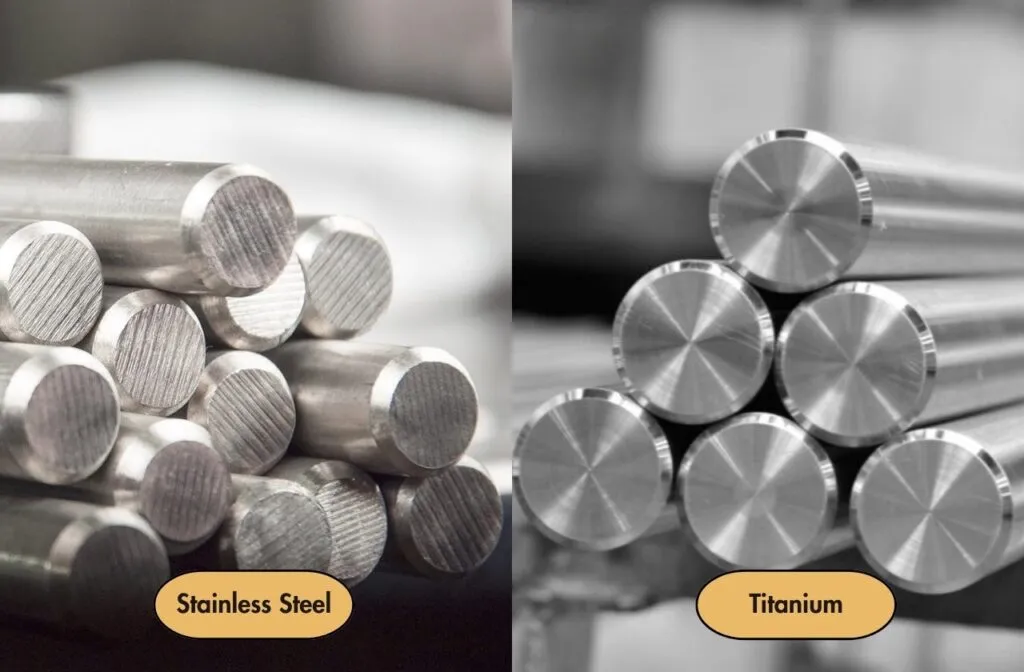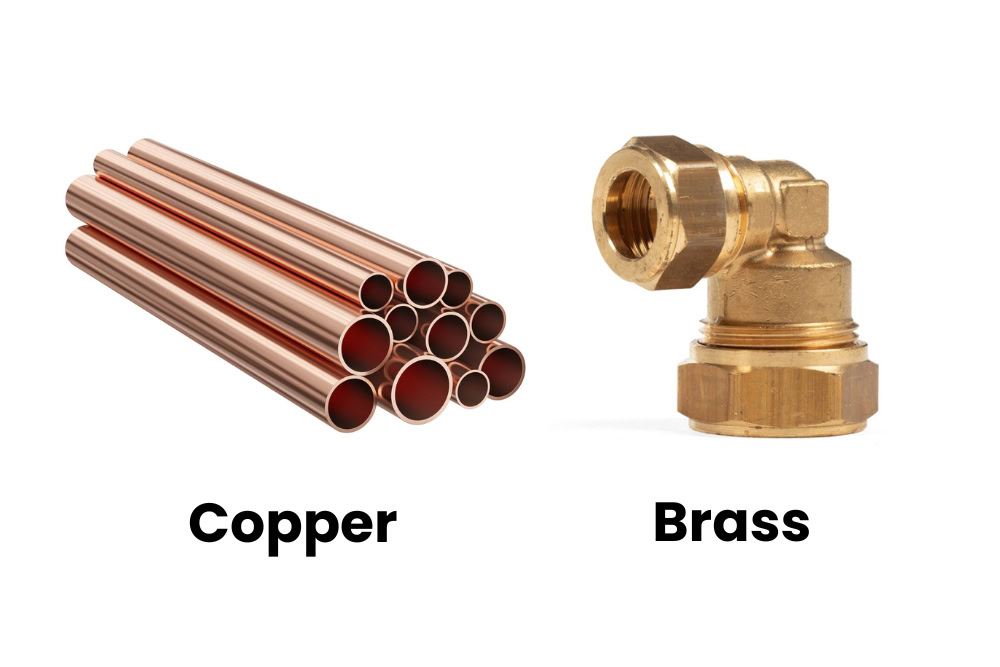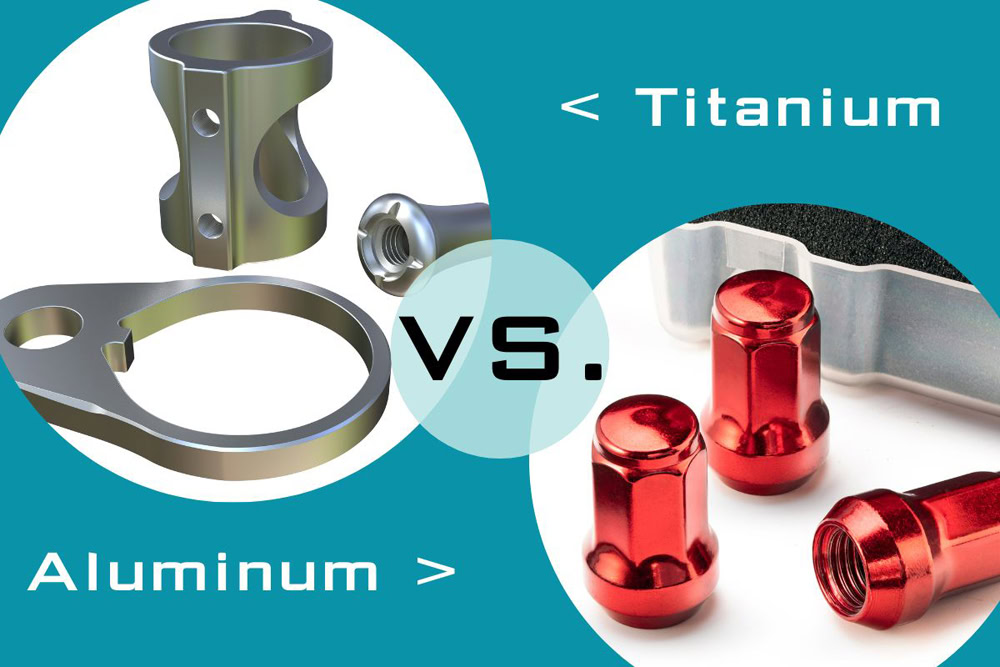The numerous things around us used for different applications are made using multiple methods and materials. The objects that involve metal tend to pass through different methods for producing the different application based products. One of the methods of manufacturing metal-based products is sheet metal laser cutting. If you are willing to know more about this process and every minute detail associated, you are at the right place.This guide below features everything associated with the sheet metal laser cutting process and will help you learn many things about it. So, let’s read below.
Table of Contents
Toggle1. What Is Sheet Metal Laser Cutting?
Sheet metal laser cutting is also known as sheet metal fabrication. It is an industrial process of manufacturing that uses lasers in the form of high-power light beams. This laser helps to cut down the thin metal sheets. The entire process is controlled by CNC technology, and it helps with cutting parts using high precision. Multiple industries use the sheet metal laser cutting process to manufacture parts based on metal sheets.There are different processes and forms of lasers used in the cutting process, and each type of laser has its pros and cons, followed by features that help with the cutting process.

2. The Sheet Metal Laser Cutting Process
The process of sheet metal laser cutting is based on three distinct methods, and every technique uses a different process; these three methods are discussed below:
2.1. Laser Beam Fusion Cutting
The laser beam fusion cutting process comprises inert cutting gas, either argon or nitrogen and is done through a cutting torch. The inert gas used helps to avoid oxidation. This oxidation usually takes place at the cutting edge but can be avoided if inert gas is used.
This gas never reacts with the process and hence is suitable for metal sheets that are thin and flat and where the material has sufficient visual requirements and also has less need for post-processing.
2.2. Laser Beam Sublimation Cutting
Sublimation cutting is another process used for sheet metal laser cutting, and it comprises a laser. The parts of the material in question are evaporated with the help of the laser beam, and it doesn’t let the metal melt much.
The laser beam sublimation cutting is a slow process, but if high-precision cutting and neatly finished edges are needed, this process is one of the most suitable options.
2.3. Laser Beam Flame Cutting
The process of laser beam flame-cutting companies using oxygen gas. This gas helps in evaporating the molten metal. Since oxygen is involved, the process is an exothermic reaction, leading to an increase in the energy of the process.
This process is mainly for cutting mild steel and helps with different sheet metals. Moreover, materials like ceramics can also be processed using this method.
3. Types of Lasers for Sheet Metal Cutting
There are different kinds of lasers used for cutting sheet metal; every kind differs from the others, and the features of each type of laser are discussed below:
3.1. Fiber Lasers
The fiber laser cutting machines offer the most precise cut, so fiber lasers are opted in applications where metal cutting needs high precision. These are lasers with a solid state; using them, they help cut materials like alloys of metals, metals, and even non-metals.
Apart from cutting the materials, these lasers help engrave and annealing metals. They are highly extensive and consist of using high power. Their life is around 25000 hours, and they do not need a high level of maintenance.
Fiber lasers are known to produce the most robust beams of lasers, which are highly stable. They are suitable for cutting materials with less than 20mm thickness.
3.2. CO2 Lasers
CO2 lasers are also used widely as cutting lasers, and these lasers carry out their function by producing a beam of light; this light comes through running electricity, which comes from a tube that has a mixture of gasses.
These gasses are mixed compressing inert gasses like nitrogen and helium followed by carbon dioxide. The gasses used in this process are the most common ones.
When compared to fiber lasers, the carbon dioxide lasers are less vigorous. The laser machines using CO2 lasers can cut non-metals, including plastics, acrylic, and wood. However, in some instances, they even help cut metal in the form of sheets. The thin sheets of metal cut using this process comprise non-ferrous metals and aluminum.
3.3 Crystal Lasers (ND: YAG or ND: YVO)
Crystal lasers are used in sheet metal cutting, but there are two forms of such laser cutters. ND: YAG, also called neodymium-doped yttrium aluminum garnet, and ND: YVO, which is called neodymium-doped yttrium Roth-vanadate, YVO4, are two forms of crystals that are used for the cutting process.
These two forms of crystals are widely used as they offer a high power when cutting the metals. On the other hand, they are very expensive, and their life expectancy is also half that of fiber lasers. They have a life which ranges between 8000 to 15000 hours.
The crystal lasers are suitable for cutting metals that may be coated or uncoated, and they even work well when cutting non-metals, which comprise plastics and ceramics.
4. Material for Sheet Metal Laser Cutting
Sheet metal laser cutting is a very efficient method that helps to cut metal in different sizes and shapes. However, there are many types of materials to choose from, which have their features for different applications and can be cut using sheet metal laser cutting. Some of these materials are discussed below.
Steel
There are different forms of steel, and each form has its features:
Mild steel is used because it is highly affordable and offers versatility.
Stainless steel is known for its long-lasting finish and resists corrosion.
High-strength steel is also used in many applications, and it is used in those products that need a high level of strength.
Aluminum
Aluminum is a lightweight material, and it is used in applications where corrosion resistance is needed, like automobile, aerospace, and consumer electronics.
Brass
Brass is a mixture of zinc and copper and looks aesthetically appealing; hence, it is used for applications that need an aesthetic uplift with sheet metal laser cutting.
Copper
Copper is a material used in electronic applications and offers conductivity and corrosion resistance; electronic components are manufactured using sheet metal cutting.
Nickel
Nickel is a very durable material that resists high temperatures and corrosion. Hence, it is used in applications like chemical processing and aerospace.
Galvanized Steel
Galvanized steel is used when it comes to laser cutting of sheet metal and is used in applications that need a corrosion-resistant material consisting of a layer of zinc.
Titanium
Titanium is used in the automobile industry, aerospace, and medical. It is strong and lightweight and offers ease when combined with the sheet metal cutting process.
The materials discussed above are all highly relevant regarding the sheet metal laser cutting process, but which material to choose for which application depends on the requirements.
These requirements are composed of strength, the capacity of the material budget, and all these factors. The material’s properties must be assessed before the selection, and it should be suitable for the application.
5. Factors affecting laser cutting costs
The cost of laser cutting for sheet metal depends on many factors. Some of these factors are as follows:
Nature of Material
The materials have different types and thicknesses; according to this, the cutting process occurs. The materials, which are hard and thicker, need more time as well as the power of a laser to cut, and this has an impact on the cost.
The more time required and power needed, the higher the cost of the process and vice versa.
Wastage of Material
Material needs to be used efficiently during the process of sheet metal cutting; when the material is used, the waste is reduced, and hence, the sheet metal is optimized properly. This helps to reduce the cost. However, in cases where the wastage is high, the overall cost also increases.
Setup Cost
Setup cost for machines is also a considerable cost, and it consists of loading and fixing the material, setting up the laser, and preparing the machine; this adds to the cost of the process because it also needs a separately trained individual to do the job and takes time as well.
Complexity of the Design
Complex designs impact the speed and end up increasing the time as well as cost. However, in cases where the design is simple, the speed of the machine is fast, and hence the cost is reduced.
Efficiency of Machine
Efficient machinery helps to offer a precise and efficient cutting process, which leads to cost savings. Laser-cutting machines that are inefficient or not maintained properly may increase the cost of the process.
Consumption of Laser
The laser cutting process is backed with inert gasses; they cost more when consumed in higher quantities. The thick and tough materials tend to increase the cost of the process due to high gas and power consumption.
Cost of Labor
Labor costs also add to the entire laser cutting process, and it even comprises setting up the machine and the tasks for post-cutting; hence, this leads to an increase in the overall cost.
Volume of Order
The order volume is also an essential aspect that impacts the cost of the sheet metal laser-cutting process. If the volume is high, economies of scale are achieved, leading to savings on the process cost by reducing per unit price. However, if the volume is low, the cost per unit is high.
6. Advantages of Sheet Metal Laser Cutting
Sheet metal laser cutting is a method to manufacture many applications that require metal in the form of sheets to be cut down. Some of the advantages of the sheet metal laser cutting process are as follows:
Precise Cuts and Designs
The beam of light that comes from the laser helps cut metals with high precision. The cut’s accuracy is remarkable, leading to melting and evaporating material, which is so fine that it cannot be compared to any other method used for cutting metals.
The die-cutting tools offer a tolerance of 1 to 3 mm, but the accuracy level is as low as 0.003mm when it comes to laser cutting.
Better Utilization of Sheet
Laser cutting is a method that does not involve any waste. The laser cuttings make the most of materials and use them to a maximum. Therefore, the stress of buying extra material for the accomplishment of design and process is not nonexistent.
Also, as the wastage is reduced, the material cost even reduces because too much of the wastage leads to excessive costs, which are saved in this process.
Versatile Cutting
The entire process of sheet metal cutting is versatile; it offers flexibility, and many functions are performed by this method. This process is suitable for simple and complex cuts and even supports intricate details and engraving.
Hence, the process doesn’t make manufacturers go through the hassle of occasionally replacing the tools when the process continues. It helps achieve the desired cuts and designs efficiently.
Utilizes Less Power
Sheet metal laser cutting is a process carried out by machines that work automatically, and you don’t need to move their parts. The metal pieces are cut by consuming less energy.
The laser cutters use an energy of 10KW; other cutting processes consume five times more energy than this.
Damage Free Cuts
Some people have thought that due to the sheet metal laser cutting procedure, the parts produced are subjected to damage due to heat production.
However, this is not the case; the heat impact is minimal, and the tolerance of the metals is not compressed due to this.
The components manufactured by laser cutting have their features intact with no damage.
7. Disadvantages of Sheet Metal Laser Cutting
The sheet metal laser cutting process has a lot of benefits, but there are some downsides too, and these are as follows:
Requires a Trained and Experienced Operator
Operating a laser cutter is not possible for a person who is not a professional. Only a professional and trained person can operate the machine to utilize it at its best.
An expert will handle them reasonably in case there is any fault that the expert would also detect. In case an untrained person tries to operate the machine, there is a high chance that they may end up damaging it.
Limited Thickness of Metal Supported
Laser cutting is capable of supporting a wide variety of materials, and this even comprises metal sheets. However, this process is only suitable for some thicker materials. The usual laser cutters are suitable for cutting down the metal sheets, and the maximum supported thickness is 15mm if it is aluminum and 6mm if it is steel.
Releases Harmful Gasses
The laser cutters use inert gasses to carry out the sheet metal process. When they tend to cut metals, they either do this by evaporating them or melting them, and this leads to the release of harmful gasses.
These gasses may cause a lot of issues. Hence, it is always recommended that the laser cutting process be operated in a working environment that is safe and adequately ventilated so that the fumes do not cause trouble for the operators of machines present in the room.
Hefty Initial Investment
Laser cutting machines are available in different qualities; however, when you look forward to investing in the best quality laser cutting machine, the cost is usually high, requiring a hefty investment.
8. Critical Tips for Laser Cutting Parts
You can follow the tips suggested below to maximize the laser cutting process in designing the best-looking metal parts.
Managing Power with Thickness
The material’s thickness and the laser’s power go hand in hand; when the thickness of the material is high, the power needed to cut the laser will also be high.
In case you keep a low power for cutting thicker materials, the laser won’t be able to penetrate the metal and will not give the desired cut. Hence, it is important to ensure the power and thickness are appropriately aligned.
Margin for Kerf
You need to have a margin for the kerf. Kerf is when the laser cutter processes the material used for manufacturing part, impacting it as a burn.
Hence, keeping a margin of kerf in our part that is manufactured using the thicker material is essential because it is more prominent when the material used for manufacturing a part is thick.
Appropriate Material Selection
The material chosen for laser cutting is also essential to be considered. When selecting a suitable material, you have to keep an eye on its properties and whether or not you want these properties to be incorporated into your final products.
Some materials are rigid, some are transparent, and some are flexible. Hence, choosing them according to your requirements and the laser-cutting process is equally important.
Significance of Spacing
The space between the two paths of the sheet metal must be at least 2 mm. This thickness is important because it helps remove error in case it persists, and the best possible result is achieved.
Text Incorporation
Laser operations vary, and only some laser operations need text cutting. However, in cases where it is required, the best way to incorporate it is to write the letters in a larger format with sufficient spacing, as it offers a better result. If you incorporate letters but are close to each other, they would overlap.
9. Applications of Sheet Metal Laser Cutting Parts
The sheet metal laser cutting parts are used widely in many kinds of applications, and some of these are as follows:
The components that are used in the aerospace industry are the ones that need to be accurate. They are highly precise parts, and they also need high tolerance because of the aircraft’s design complexity.
The process of sheet metal laser cutting helps create lightweight and suitable components for the aerospace industry. Materials like aluminum and steel are widely used in these applications.
The sheet metal laser cutting process is also a low-cost method that is ideally suitable for manufacturing fasteners used in aerospace and panels. Moreover, these parts are suitable for manufacturing enclosures for sensors and other fixtures and tools.
The foundation of automobiles is sheet metal. The evolution of sheet metals led to the evolution of automobiles because most of the parts of a vehicle are made out of thin sheets of metals like frames, roofs, panels etc. These parts are seduced to a laser cutting process and take a form and design which is needed for them to be fixed in an automobile.
The medical industry is equipped with changing demands, so choosing the suitable material is very important to ensure that the medical tools are high quality. These tools need a high level of accuracy, and there is no margin for compromise in the quality.
The sheet metal laser cutting process is highly automated and comprises a lot of accuracy. Hence, the instruments used in the healthcare sector can carry out the required functions very well.
Moreover, the sheet metals are backed with such properties that they appear highly suitable for different medical functions. The most common forms of sheet metal used in medicine are stainless steel and aluminum, and they are primarily seen in MRI as they remain unaffected because of the created magnetic fields.
Electronics Industry
The electronics industry is equipped with numerous applications that require the use of sheet metal, and Thai comprises manufacturing electronic components like cell phones, tablets, LED lighting, and telecommunication equipment.
Consumer Appliances
Every appliance that is used in different applications consists of sheet metal. The process of sheet metal laser cutting improves accuracy. It helps to design the sheet metal in a very beneficial way and helps to be applicable for different kinds of appliances.
The process of sheet metal laser cutting not only helps to manufacture the components of the appliances but also the enclosures of the appliances. The appliances manufactured using this process comprise blenders, applications used in different appliances, and many more.
10. How to Reduce the Cost of Sheet Metal Laser Cutting?
The cost of sheet metal laser cutting can be reduced using different methods, and some of these techniques are as follows:
Selecting Appropriate Raw Material
Selecting suitable raw materials when it comes to producing the components using sheet metal laser cutting is an essential aspect to ensure that cost is saved. Choosing materials that are low-cost but of better quality is imperative.
It is suggested to use affordable materials and, at the same time, can perform functions up to the mark. If you compare stainless steel and aluminum, you can see that the cost of aluminum is less than that of stainless steel, but the properties are more or less the same; hence, choosing it will help you save on the manufacturing cost.
Sheet Gauge Selection
Selecting the sheet gauge with a standard size is always very much suitable for the design. Choosing the gauges of metal sheets that are readily available and affordable is suggested.
Elimination of Plating and Welding
The cost of sheet metal laser cutting can be reduced by eliminating the welding and plating. The metal sheets that are welded tend to release toxic gasses, so the cost of manufacturing increases.
Plated sheet metals are the ones that increase the cost of manufacturing and also the lead time; hence, avoiding them helps to reduce the cost of manufacturing.
Keeping the Design Simple
The complexity of the design makes it appealing and aesthetically pleasing, but at the same time, it increases the cost of manufacturing. The more detailed the design, the more tools will be needed to create it, and it even increases the cost of the process.
Simpler designs with basic bends will help reduce the cost of the process, and if you keep the radius of the bend uniform, you will be able to reduce the manufacturing cost. The more features and details you add, the higher the cost of the process will be.
11. Post Finishing Processes
Once you have manufactured the components using sheet metal laser cutting, some components may need post-processing, and there are different methods of post-processing, which are suggested below:
Passivation
The process of passion is opted to protect the component from corrosion and gives a layer of oxide, which adds protection. This process consists of providing the material with a citric and nitric acid bath.
The surface of the sheet metal after this process is not smooth, but it needs a cleaning process beforehand to carry out the passivation.
Chemical Films
It is one of the most affordable finishing materials, which leads to applying a leader of chemical coating. It is suitable for aluminum and acts as a primer for the base of the metal, and it helps to reduce the chance of corrosion on the metal, which is coated with the chemical film.
Electroplating
The process of electroplating is carried out through electricity, and it uses an electrolytic cell for this. The metal layer is applied to the metals, creating a bond that helps improve the functionality and aesthetics of the components and metal.
The process of electroplating reduces the friction between the parts that move and also offers a layer of protection. It is ideally suitable to help avoid corrosion and enhance the metals’ adhesion property.
Painting
The process of painting adds a coat of paint on the metal surface. Layers of paint are sprayed on the metal surfaces.
The painting process improves the finishing and layout of the surface, and it even helps to remove the defects or conceal the faults on the surface of the metal. It is not as durable as other finishing methods but still can help conceal the faults on the surface.
Laser Etching
Laser etching helps in creating permanent marks on the components, and it is a specified process that is expensive and helps to add identification marks by melting the metal. Many brands use this method to create their brand mark or a point of identification. This process uses high temperatures to engrave the mark.
12. Conclusion
The sheet metal laser cutting process is commonly opted for and is used for many applications. Hence, if you are also looking forward to having your components manufactured using the process, AN-Prototype can help you in that regard.
You will find multiple options with a lot of verticality, and they offer affordable services; the cost of components manufactured will also be relatively less. Many kinds of materials are offered to provide you with a lot of ease according to the requirements you have associated with the industry you operate in.
